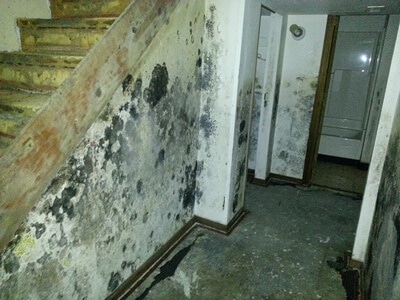Everybody has become aware of mold. It is a fungus that happens mainly in the dark and wet areas of a home and once it occurs, it almost always returns and that is since mold is difficult to eliminate until cautious steps are taken.
Many a times people understand they have a mold invasion only after your house begins to smell rather peculiar which happens when the mold has spread out considerably which indicates the possible loss of products and also health hazards like trouble breathing, skin irritations, aching throats, and so on

What Can Be Done?
The first thing to do is to comprehend that mold can take place at any time and an understanding of how it looks, where it can grow … and what it likes to grow on, can help a lot to find it in the early stages and to eliminate it.
There are lots of kinds of basement mold, contrary to common belief and knowing the common forms might assist a person discover them when they clean their basement.
Typical Types
The 4 major kinds of mold that you can find are:
Aspergillus: This is a really common kind of basement mold and there are more than 150 subtypes of this found in nature. This mold likes to grow on organic items that are stored and left undisturbed for a long period.
Many people use their basements to save grains, materials made from plant-based materials, and even utilize cotton-based items in their basement and these are favorites of this kind of mold. They are easily recognizable as they grow circular and are light in color.
It is a great idea to not leave grains of organic substances still for a long time and to add to that, some ventilation can help discourage the growth of this type of mold.
Cladosporium: This kind of mold is discovered in about 30 variants and these specifically like to grow on surface areas like plywood, paint, and fiberglass. These molds need very high humidity of about 50% and grow in an extremely peculiar way that is once again rather quickly recognizable.
They are dark in color and might be completely black and even green in look. The easiest way to recognize them is by concentrating on their texture as they appear powdery.
Stachybotrys: This kind of basement mold is commonly referred to as black mold, and likewise called harmful black mold. These can mainly be discovered around leaky pipelines or in water damaged areas. Many individuals have even seen this kind of mold without understanding what it is; this kind of mold appears black and shiny and grows in streaks.
One thing to know about this kind of mold is that it grows really gradually and can just grow if a water harmed area is left without treatment for a long period. It is important to eliminate this kind of mold as early as possible as it releases mycotoxins that cause different health concerns.

If a person areas Stachybotrys growth in their basement, it is a good concept for them to consult an expert like Catstrong who will remove them efficiently and fast since these kinds of mold also produce favorable conditions for the other molds to grow.
Fusarium: The 4th significant kind of basement mold; Fusarium likes to grow in the soil or on plants. These are also quite common as they are found in more than 70 versions. One unique need for these molds is very wet locations where they can grow and keeping the basement dry can lessen the possibility.
Mold can be rather harmful to the property and health and it is a good concept to learn about it so it is identified in time. Learn more about mold removal services.
